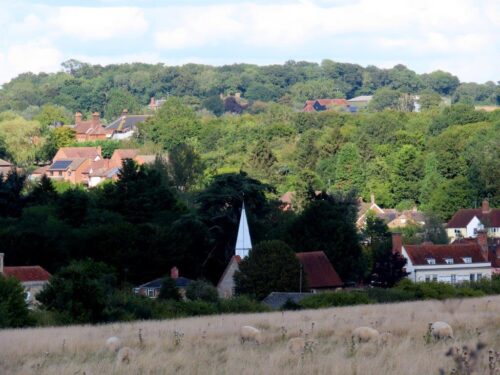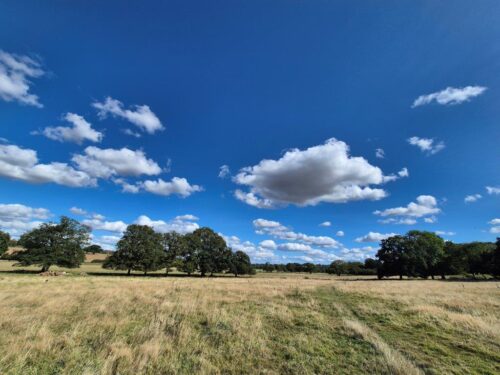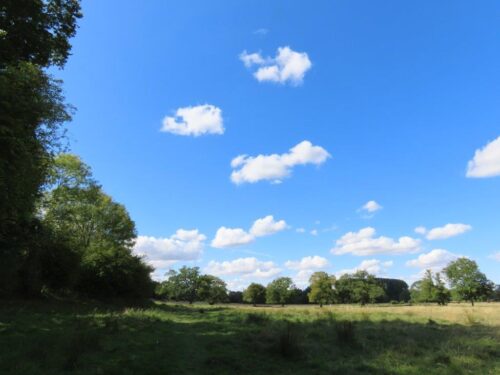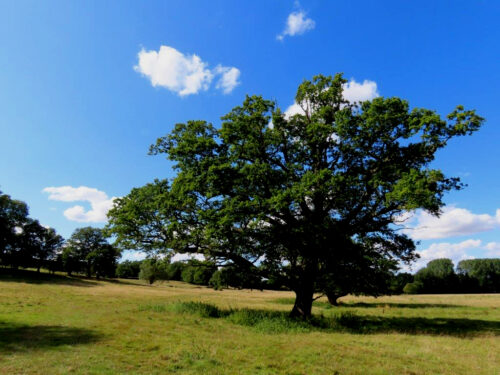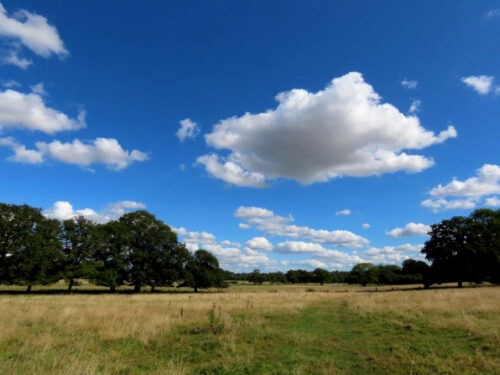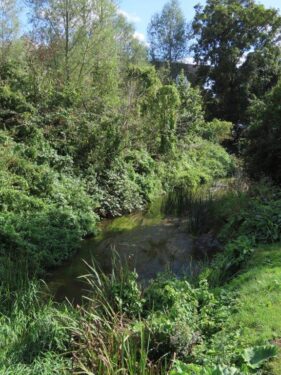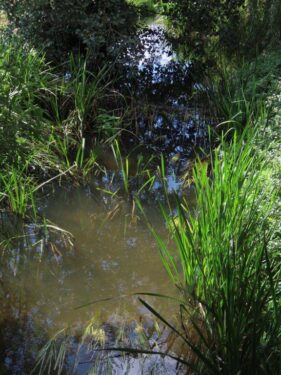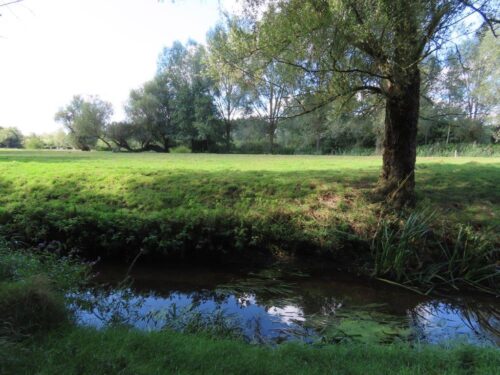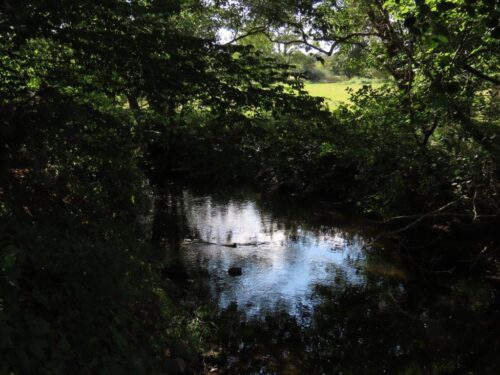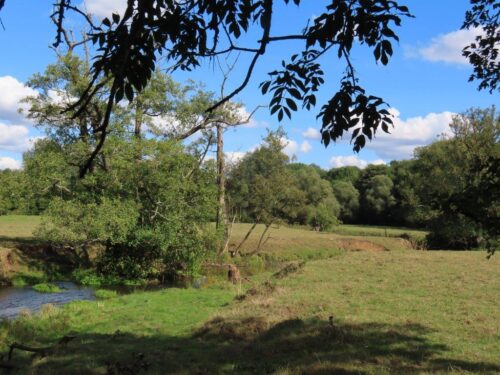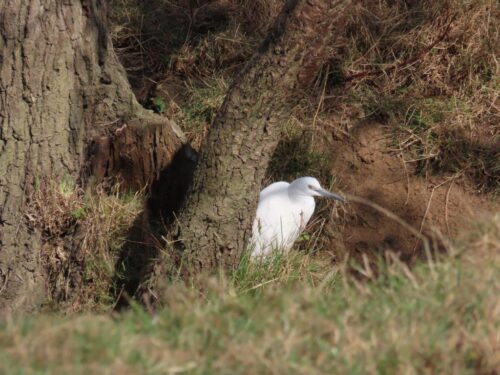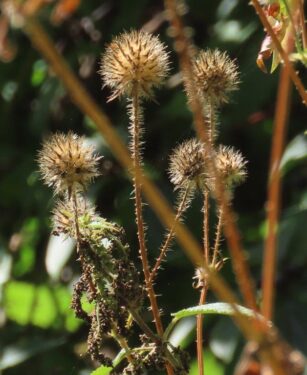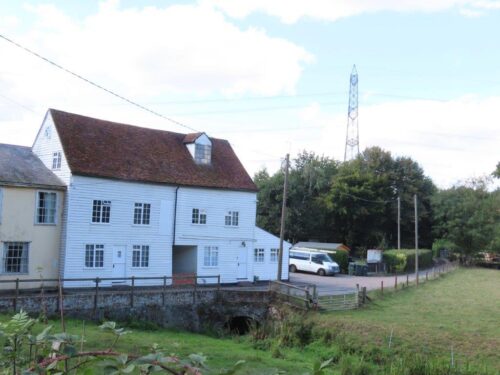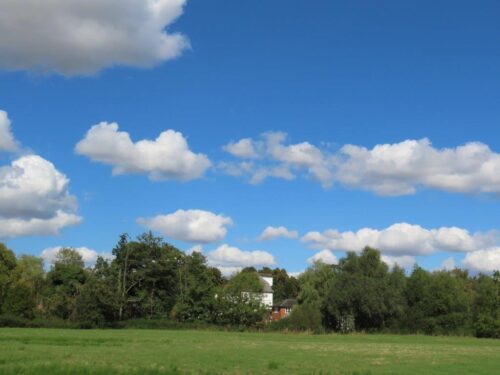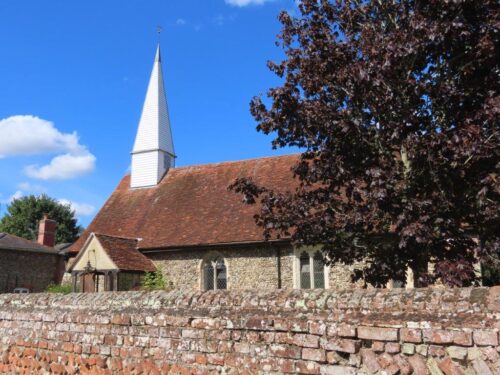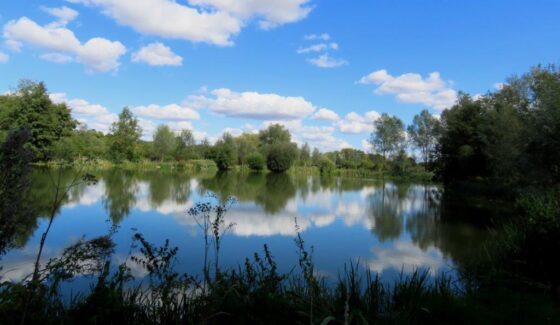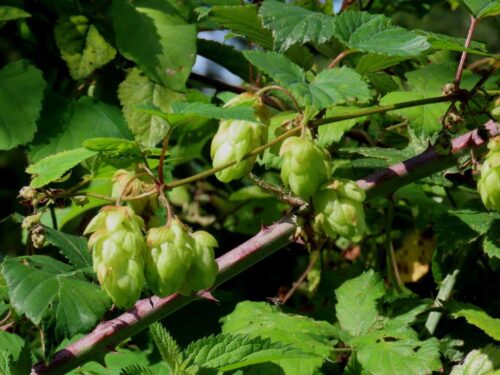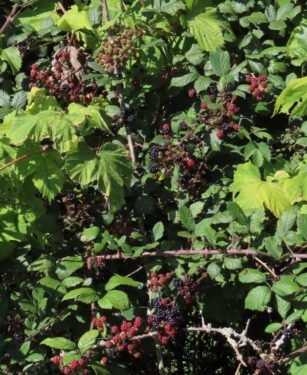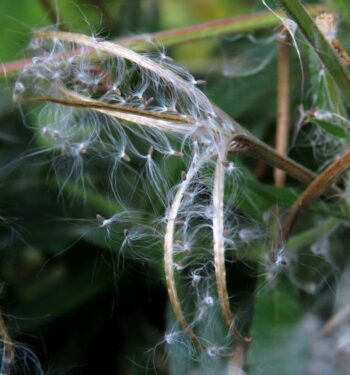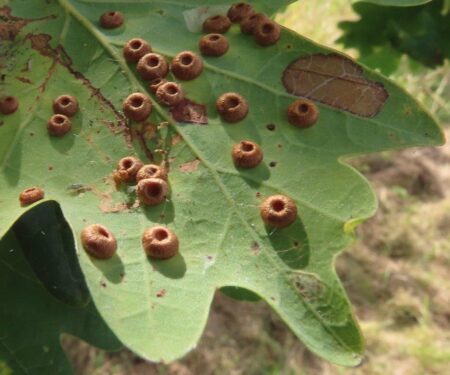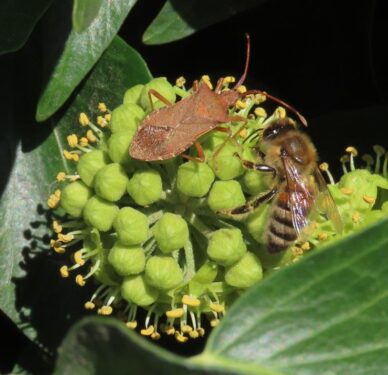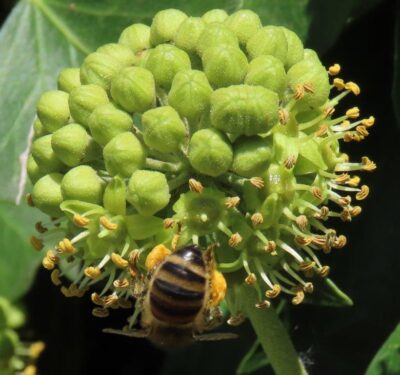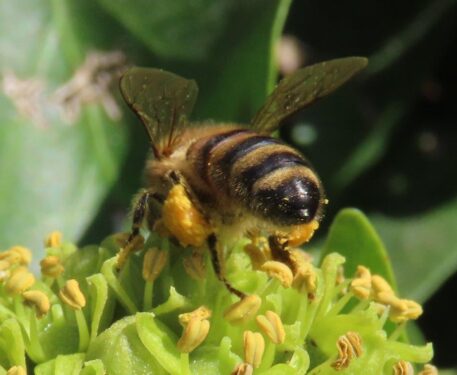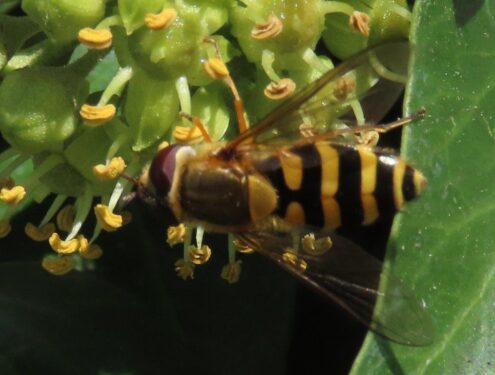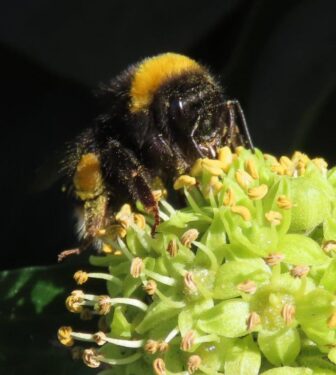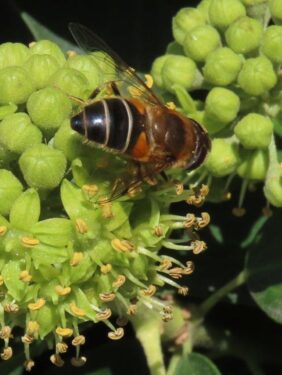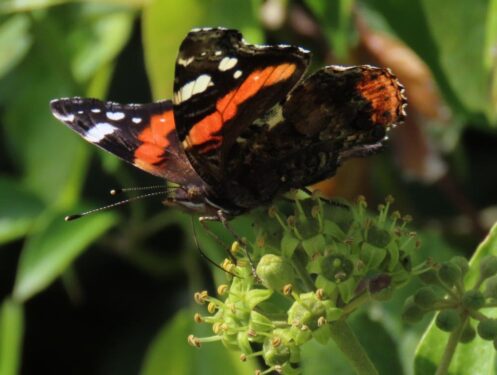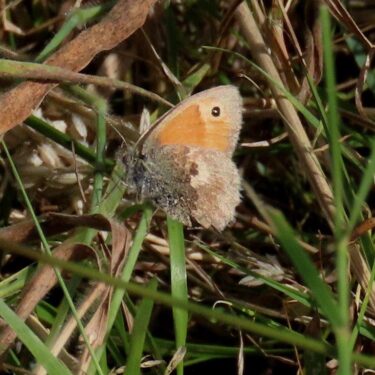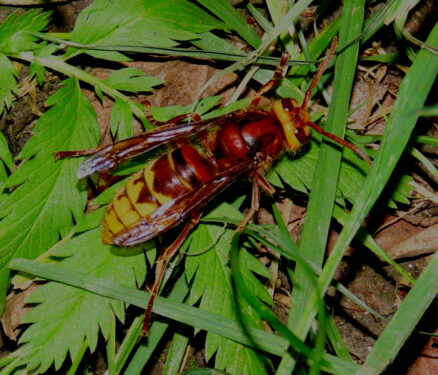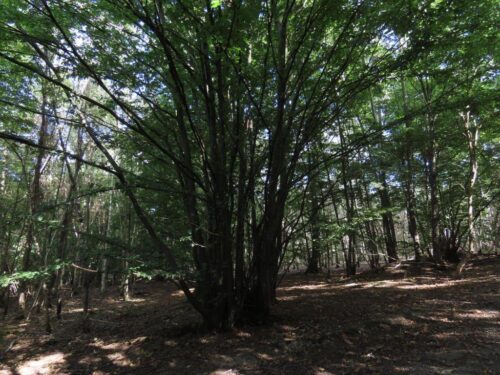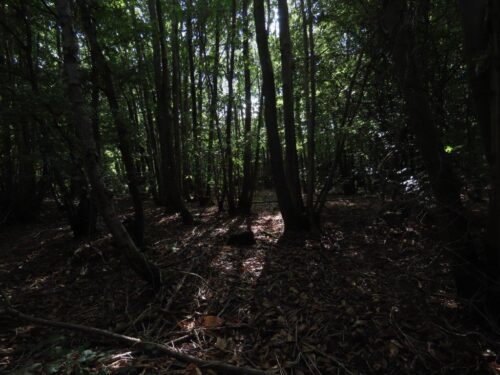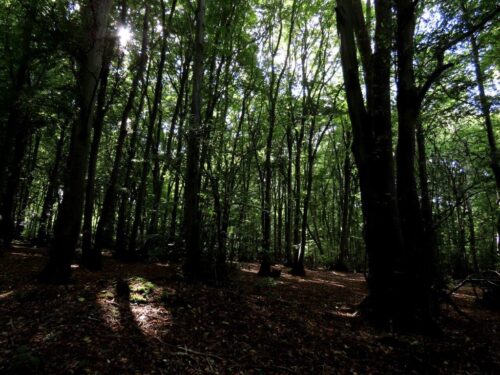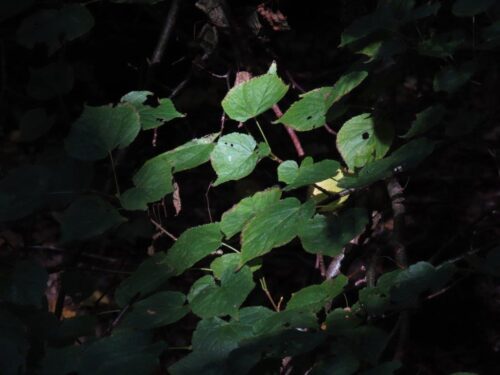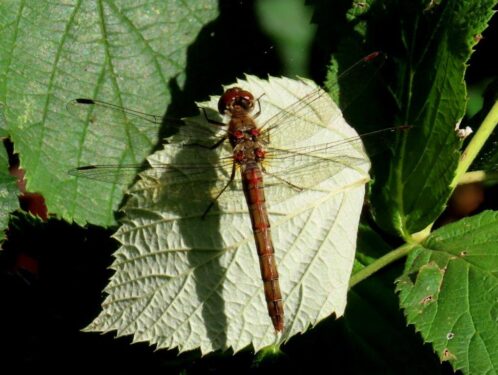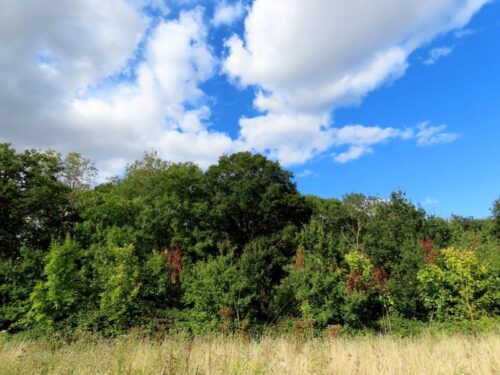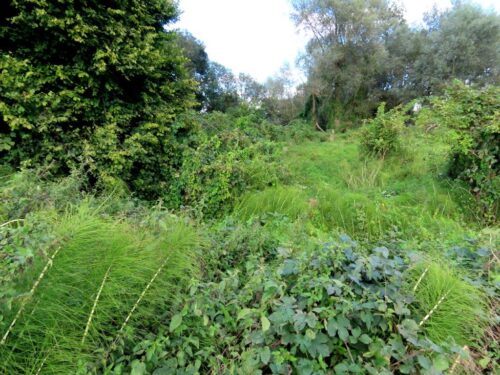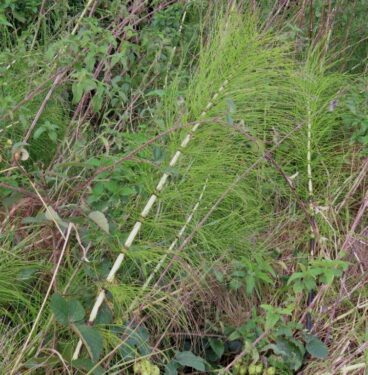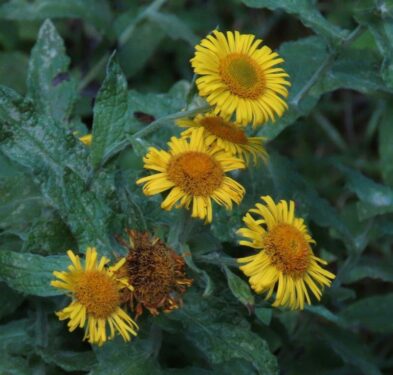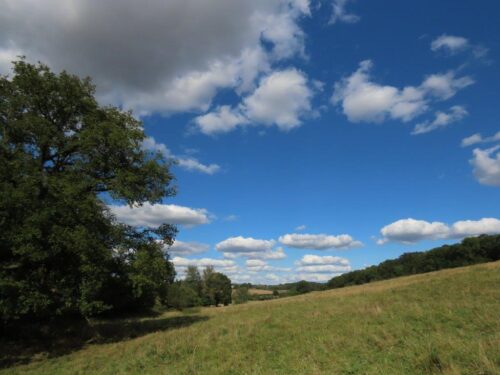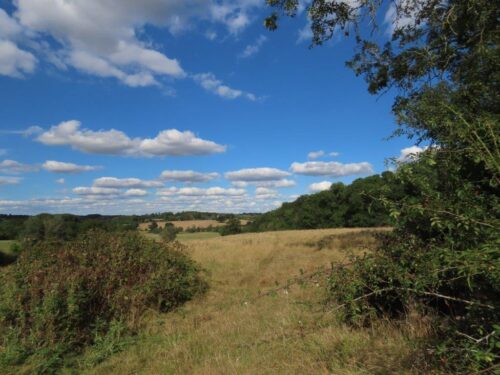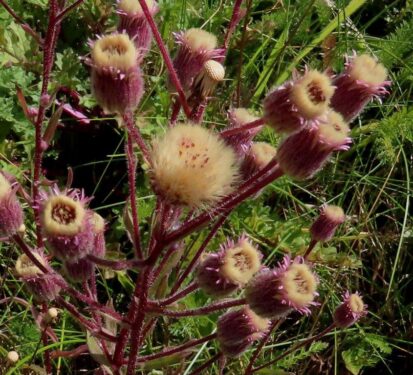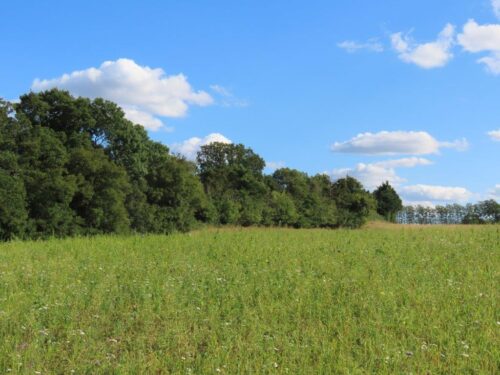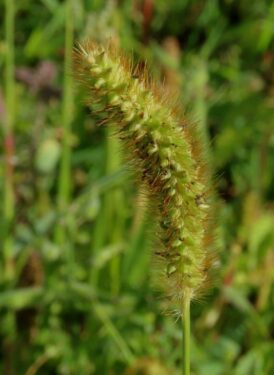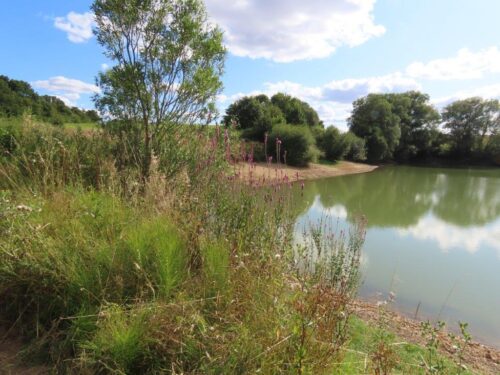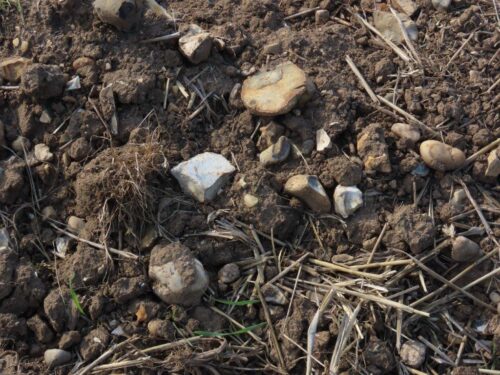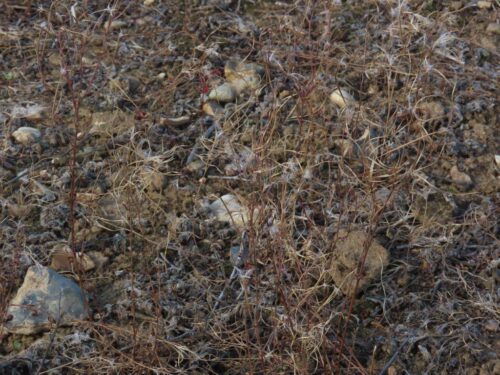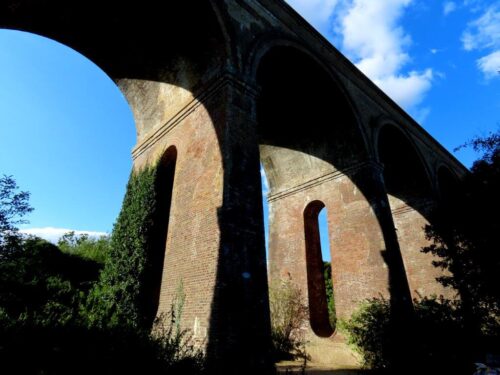Again looking for potential new day-long wildlife walks (see Around the peaks of the Essex Alps.…), we headed by train to the village of Chappel, half -way along the branch-line from Marks Tey to Sudbury, on a lovely, calm, sunny autumn day. Often overshadowed by its neighbouring Stour Valley, the one with the designation of Area of Outstanding Natural Beauty (now rebranded National Landscapes), to our mind the Colne, running from Great Yeldham to Colchester and thence to the tidal estuary we are fortunate enough to wake up to every day, is every bit as ‘Outstanding’!
We headed upstream from Chappel through the broad, sweeping pastoral valley with well-wooded slopes.
Every so often the paths approach or cross the river itself…
Here we found Grey Wagtails, Kingfisher and Little Egret; twittering, feeding Swallows; and riverbanks in places with dense patches of Small Teasel, scarce in Essex, and very much a speciality of the northernmost river valleys.
And plenty of human interest as well from churches to mills and fishing ponds.
Away from the valley bottom, the landscape was more enclosed with large hedgerows, just bursting with the fruits (and galls) of the season, as well as buzzing with the multitudinous visitors to the late-summer riches of Ivy flowers: Honeybees, Ivy Bees, bumblebees, hoverflies, Box Bugs, social wasps and many more. Also Red Admirals, although not showing the urgent migratory behaviour we had seen for the previous week along the coast.
In the grassland, several Small Heaths were flying, and a sluggish Hornet gave unbeatable views.
At Chalkney Mill we left the river behind and headed uphill through Chalkney Wood. An ancient wood with a interesting history, I was involved 20 years ago in securing the deconiferization of the two-thirds of the wood owned by the Forestry Commission. And now you would never know that it had had a forty-year blip in its venerable history of coppicing. It was especially reassuring to see Small-leaved Lime, the tree for which the wood is especially renowned, rising from the ashes of herbicide application and dense, dark overshading.
Far from the best time of year to see such a wood, the sheltered rides at least had good numbers of dragonflies: Common Darters, Migrant Hawkers and a Southern Hawker.
Returning along the higher ground, passing damp woods and springs filled with Great Horsetail and Common Fleabane …
… we reached some of the more sandy peaks, with excellent views and a few characteristic plants such as Blue Fleabane.
In addition the arable fields on the plateaux were not without interest, some sown with bird-seed mixes, and others newly ploughed tracts revealing abundant flints. There is no chalk locally for flints to come from: these hills are clothed in ‘chalky boulder clay’, the accumulated detritus picked up further north from the melting of the Anglian glacial advance.
And something I have never seen before, Wispy Willowherb Epilobium brachycarpum growing as an arable ‘weed’. This is a a rapidly spreading species from its first UK discovery, near Colchester, as recently as 2004.
Another short walk and the magnificent railway viaduct formed a fine full stop to the walk. Completed in 1849 and still used to this day, this is one of the largest brick structures in the country, containing about the same number of bricks – some 6 million – as Battersea Power Station!
All this, and more on our stroll, when ended very convivially with a pint and a super meal in The Swan Inn, back down beside the river itself. Lots of potential for wildlife walks around here: quintessentially English landscape, with nothing rare perhaps but still lots to see at any time from spring to autumn.

